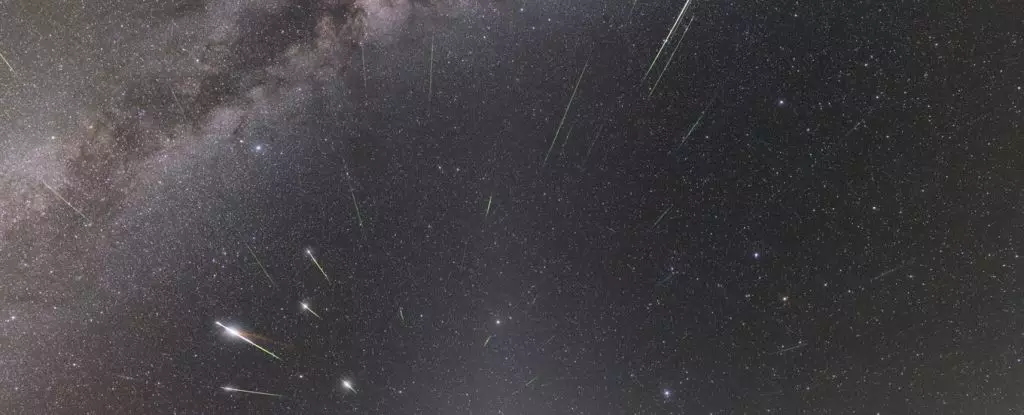As May approaches its mid-month mark, the enchanting display of the Eta Aquariid meteor shower invites both seasoned stargazers and curious newcomers alike to venture outdoors. This year, the shower reaches its zenith on the nights of May 5 to 6, presenting a dazzling performance across the southern tropics. The sky transforms into a breathtaking canvas of light as cosmic debris ignites upon entry into Earth’s atmosphere. While the meteor shower continues until late May, its peak offers an unmissable spectacle that prompts every enthusiast to seize the moment.
With just a cozy spot outdoors and a clear line of sight, anyone can partake in this celestial event. The allure of the night sky beckons us away from our screens and everyday distractions, encouraging us to bask in the sheer beauty of the universe. The mechanism behind meteor showers is nothing short of miraculous: as Earth passes through the debris left by a comet or asteroid, the remnants collide with our atmosphere, creating brilliant streaks of light in their fiery descent.
The Science Behind the Brightness: Cometary Connections
The Eta Aquariids derive from the remnants of the famous comet 1P/Halley, more commonly known as Halley’s Comet. This celestial wanderer graces our skies approximately every 76 years, yet the debris it leaves behind continues to paint the night with starlit trails long after its passage. It’s fascinating to consider how the cosmic journey of this comet affects our night skies, effectively weaving a connection between humanity and the vastness of space.
For those positioned in the Southern Hemisphere, the Eta Aquariids promise an exceptional viewing experience, with estimates reaching 50 to 60 meteors per hour. It offers an opportunity not just to observe, but to engage with a natural phenomenon that has captivated generations. Those in the Northern Hemisphere will still have a chance to catch glimpses of this meteoric display, albeit in smaller numbers—around 20 to 30 meteors per hour—making it a rich experience for enthusiasts in both regions.
Moonlit Challenges: Viewing Conditions
While the celestial performance promises an abundance of shooting stars, certain factors can influence visibility. This year, the Moon will be approximately 64% full during the peak nights, a detail that could potentially reduce the clarity of the meteors against the sky’s backdrop. However, there’s an upside: the Moon will set before the radiant—the point in the sky where the meteors appear to originate—rises, allowing for conditions favorable to observation.
Each location on Earth offers a unique vantage point for this event, making it essential for hopeful watchers to check local astronomical conditions. Resources like Time and Date can guide anyone interested in optimizing their meteor viewing experience.
Beyond the Peak: Continued Celestial Delights
If timing doesn’t align perfectly with the peak, aspiring astronomers can find solace in knowing that the Eta Aquariids will continue to grace our skies, albeit with a diminished frequency, until May 28. This extended window provides further opportunities to witness the tail end of the shower.
Moreover, those wishing to stay attuned to the cosmos can prepare ahead by downloading meteor shower calendars from organizations like the International Meteor Organization. Staying informed ensures that enthusiasts can catch future meteor shows throughout the year, extending a continuous invitation to explore the spectacular nighttime sky.
A Call to Adventure: Embrace the Cosmos
Ultimately, the Eta Aquariid meteor shower encapsulates more than a fleeting spectacle; it’s a celebration of our connection to the universe. Whether alone or in a shared moment with friends and family, gazing at the sky reveals both our vulnerability and our curiosity. The cosmos instills a sense of adventure, prompting us to explore and engage with the unfathomable mysteries above. This May, don’t miss the chance to step outside, immerse yourself in the thrill of the Eta Aquariids, and welcome the wonders of the night sky into your life.


Leave a Reply